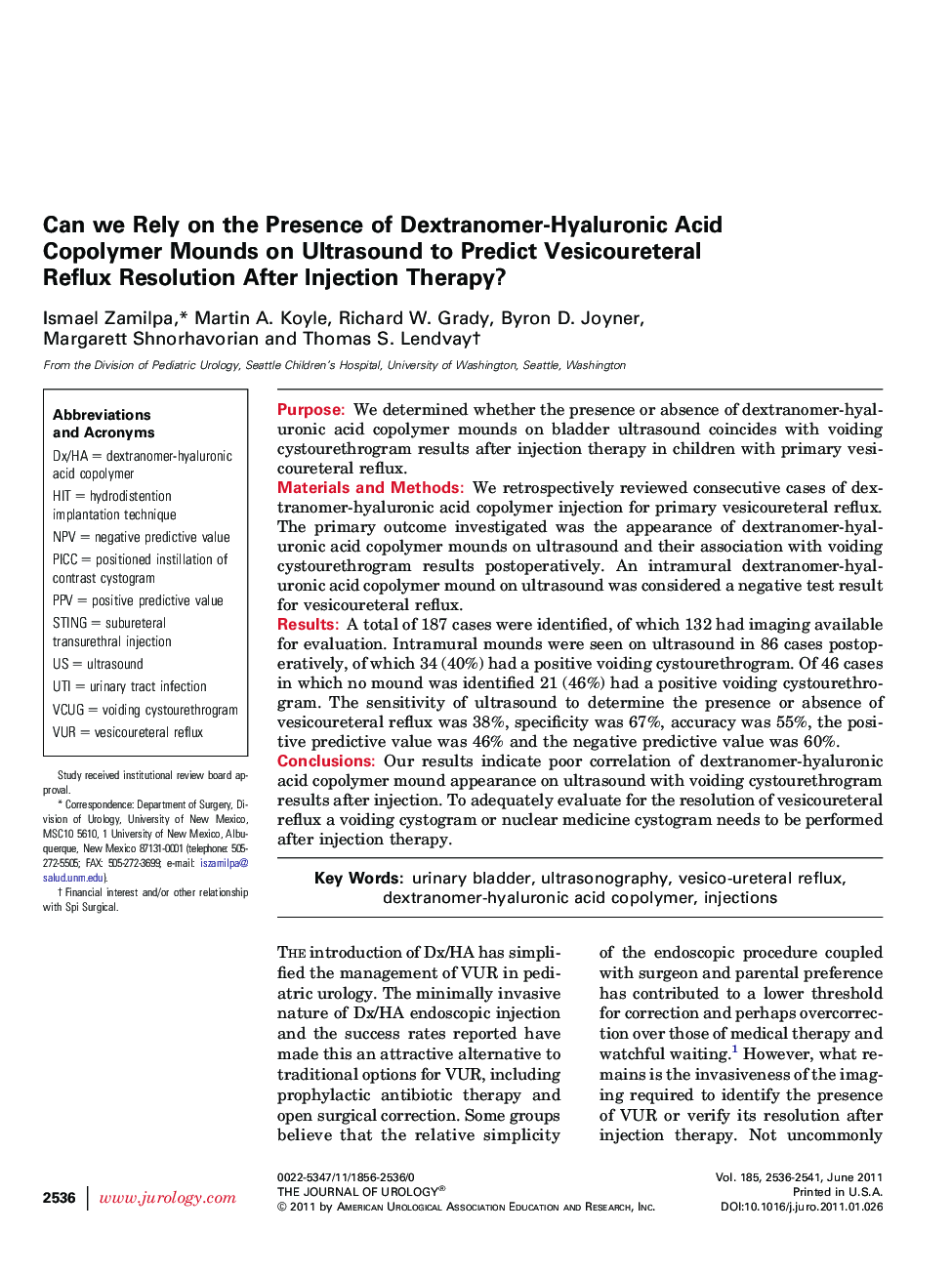| Article ID | Journal | Published Year | Pages | File Type |
|---|---|---|---|---|
| 3866439 | The Journal of Urology | 2011 | 6 Pages |
PurposeWe determined whether the presence or absence of dextranomer-hyaluronic acid copolymer mounds on bladder ultrasound coincides with voiding cystourethrogram results after injection therapy in children with primary vesicoureteral reflux.Materials and MethodsWe retrospectively reviewed consecutive cases of dextranomer-hyaluronic acid copolymer injection for primary vesicoureteral reflux. The primary outcome investigated was the appearance of dextranomer-hyaluronic acid copolymer mounds on ultrasound and their association with voiding cystourethrogram results postoperatively. An intramural dextranomer-hyaluronic acid copolymer mound on ultrasound was considered a negative test result for vesicoureteral reflux.ResultsA total of 187 cases were identified, of which 132 had imaging available for evaluation. Intramural mounds were seen on ultrasound in 86 cases postoperatively, of which 34 (40%) had a positive voiding cystourethrogram. Of 46 cases in which no mound was identified 21 (46%) had a positive voiding cystourethrogram. The sensitivity of ultrasound to determine the presence or absence of vesicoureteral reflux was 38%, specificity was 67%, accuracy was 55%, the positive predictive value was 46% and the negative predictive value was 60%.ConclusionsOur results indicate poor correlation of dextranomer-hyaluronic acid copolymer mound appearance on ultrasound with voiding cystourethrogram results after injection. To adequately evaluate for the resolution of vesicoureteral reflux a voiding cystogram or nuclear medicine cystogram needs to be performed after injection therapy.
